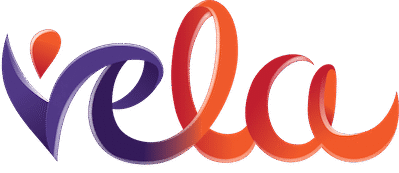Job Ads and Interviews
Job Ads and Interviews
Having a good onboarding process helps you find suitable candidates and protects you as an employer. This involves writing a job description, posting a job ad, pre-screening candidates, conducting interviews, checking references, and making a hire.
Human Rights and Hiring Process
Under the BC Human Rights Act, employers cannot refuse to hire or promote a person on the following grounds if they are NOT directly related to the person’s employment, as this would be discrimination:
- age
- race
- colour
- ancestry
- place of origin
- marital status
- family status
- physical disability
- mental disability
- sex (including pregnancy)
- sexual orientation
- political belief
- religion
- because the person was found guilty of a crime
Note: An employer can discriminate on these grounds if there is a “bona fide occupational requirement” — that means the organization can prove that discrimination is necessary to fulfill the requirements of the position. The employer has an obligation to prove that the position would be impossible to accommodate without undue hardship.
If you ever receive a human rights complaint, it will be easier to defend yourself if you have a good interview process. There is a statute of limitations on human rights complaints by employees. This means they must take legal action within a certain time frame.
If your job description requires that the employee be physically fit in order to care for someone with a physical disability then you can require the employee to get a signed medical stating they are capable of performing the job.
Job Advertisements
The job ad is the first interaction that you will have with potential staff, so it is important that you create a strong ad to draw in potential applicants.
How to Write a Strong Job Posting
Overview of the Position
- Provide a high-level summary of the role.
- Highlight the main duties and expectations (without including too many details).
- Avoid personal or intimate information about the person being supported.
- Do not include photos of the person being supported.
Tip: Start with an engaging opening line that draws attention (e.g., “Want to make a difference in the life of a young woman with a disability?”).
Why your Position is Different
- Share what makes your role appealing compared to others in the sector.
- Mention unique perks and benefits (e.g., flexible hours, supportive team culture).
- Highlight what current staff value most about working with you.
- Use keywords (e.g., caregiver, support worker, disability) to improve visibility in searches.
Requirements & Expectations
- List only the qualifications and skills truly required (not “nice-to-haves”).
- Clearly state any specific requirements such as:
- Vaccinations
- Certifications/training
- Ability to perform specific tasks (e.g., swimming, lifting, transferring)
Be clear about expectations while keeping language simple and accessible.
Salary & Benefits
- Include wage information (required under B.C.’s Pay Transparency Act as of Nov 1, 2023).
- Provide a salary range and note that pay may be based on experience.
- Share perks or benefits that could make the role more appealing (e.g., flexible hours, professional development opportunities).
Writing Guidelines
Do:
- Keep it simple, relevant, and clear.
- Make your ad stand out with thoughtful wording.
- Proofread carefully (use spellcheck and review twice).
- Create a separate email address for applications.
- Include an Equal Opportunity Employer statement.
- Respond quickly to strong candidates.
Don’t:
- Overload with details (but don’t be vague either).
- Share personal details or photos of the person being supported.
- Use complex or exclusionary language.
- Ask for unnecessary qualifications.
- Make the application process difficult.
- Wait too long to contact a great candidate.
Equal Opportunity Statement
Include a line such as: “[Your Organization] is an Equal Opportunity Employer.”
Support Worker Central
Support Worker Central is a free job board connecting people with disabilities and support staff throughout British Columbia.
Support Worker Central is specifically for individuals with disabilities looking to hire support staff, as well as potential support staff looking for their next job supporting someone with a disability.
Sign up with Support Worker Central to find your next support staff.
Interview Process
It is important to have a good interview process. If you ever receive a human rights complaint, it will be easier to defend yourself if you have a good interview process.
Interview notes can be called in during a Human Rights complaint. Even doodles on the page are looked at. Be aware of what you write.
Important: Review the Human Rights and Hiring Process facts listed near the top of the page.
Helpful Tips
- We tend to hire in our own image; a team approach will help avoid this.
- If you get a negative gut feeling during an interview, pursue that line and try to clarify your impression. If you don’t hire the person, you will then be able to justify your decision.
- During a telephone interview, be prepared for what you want to say if you do not want to follow up with a face-to-face interview.
- Offer a neutral location for meeting potential candidates for the first time for the face-to-face interview. You want your candidates to feel comfortable, and to protect yourself.
- Create a short list of candidates and call them back for a second round of interviews if necessary.
- Have a good interview process so the people you turn down don’t speak badly about you as an employer.
Dos and Don'ts of Interviewing
Watch the video below for an overview of the Dos and Don’ts when conducting an interview.
Sample Interview Questions
For your convenience, view or download our
